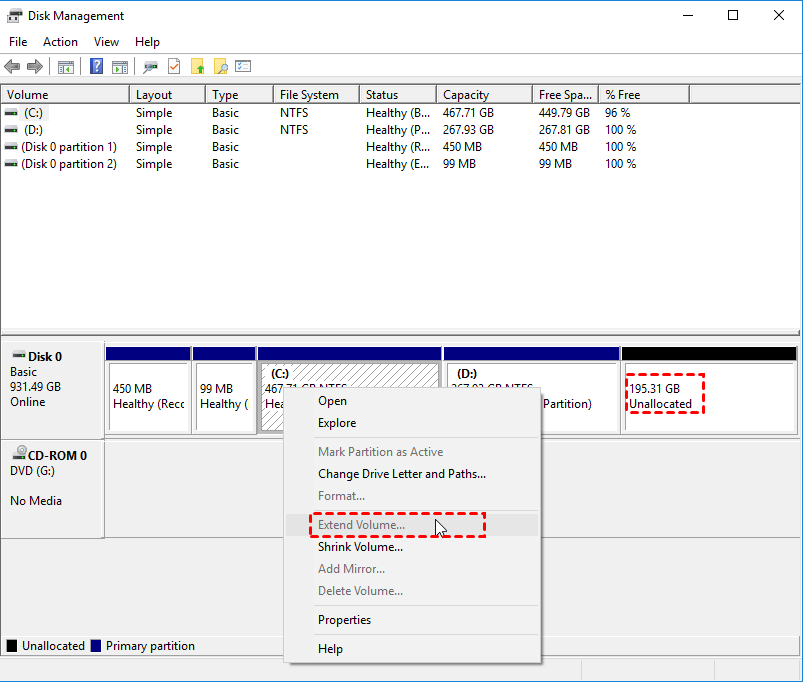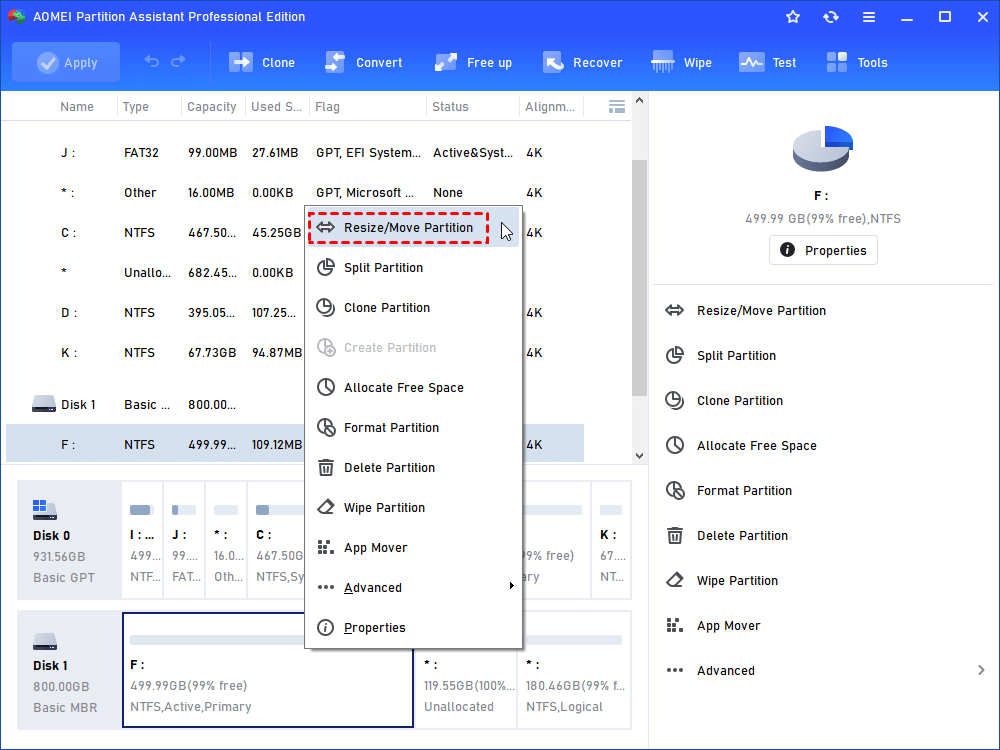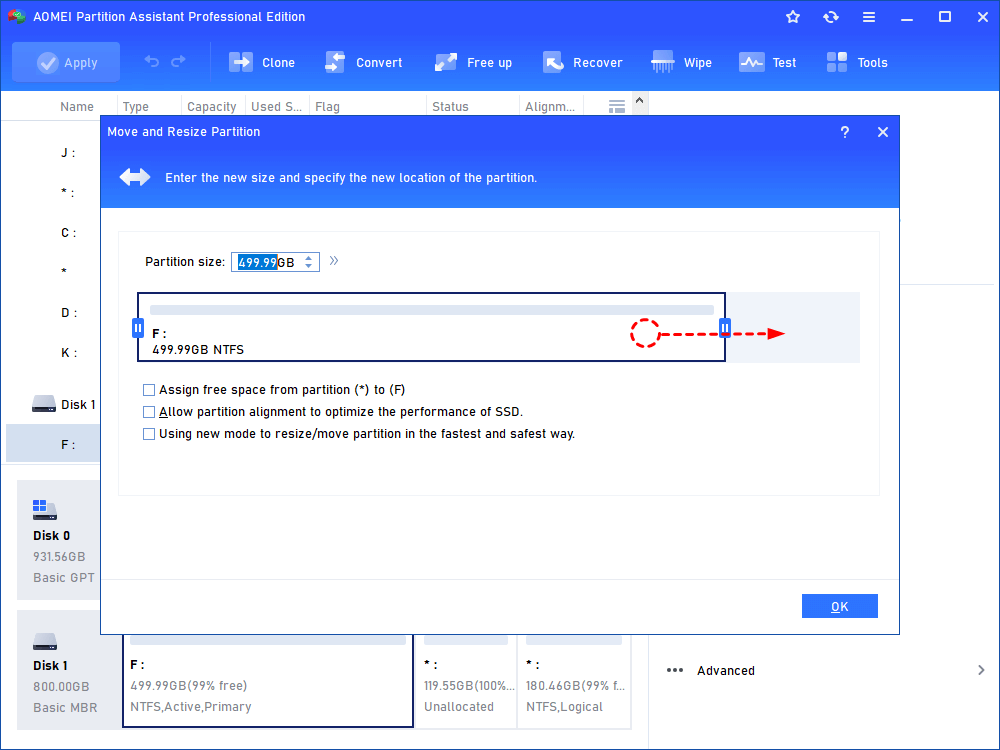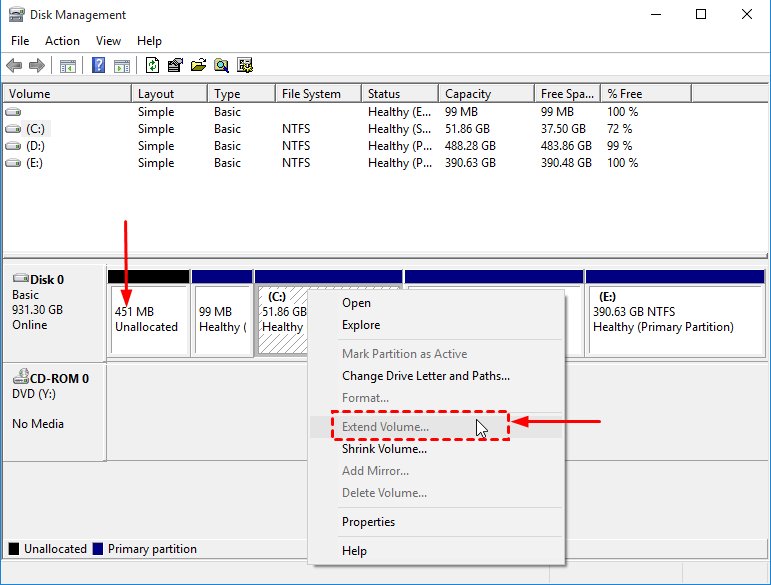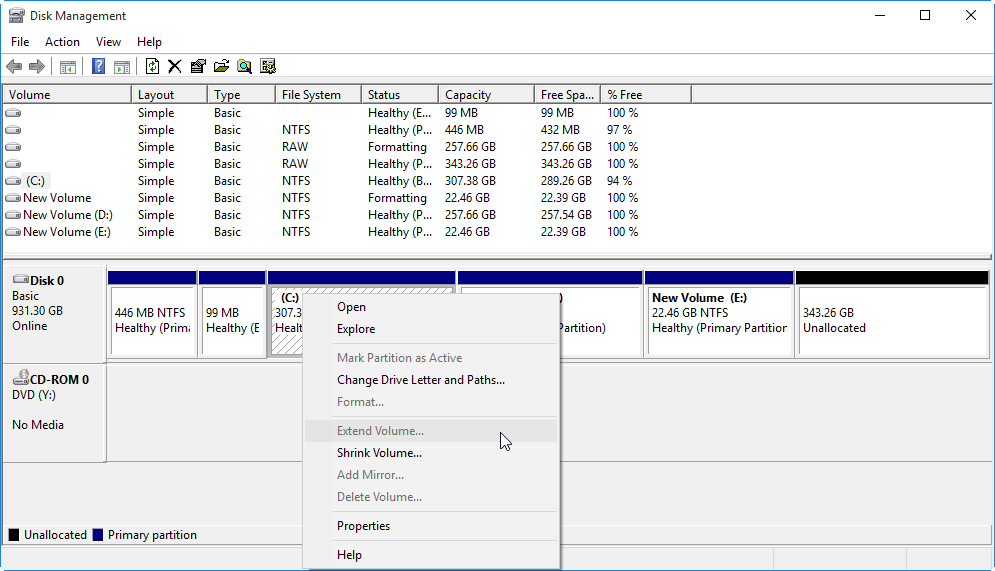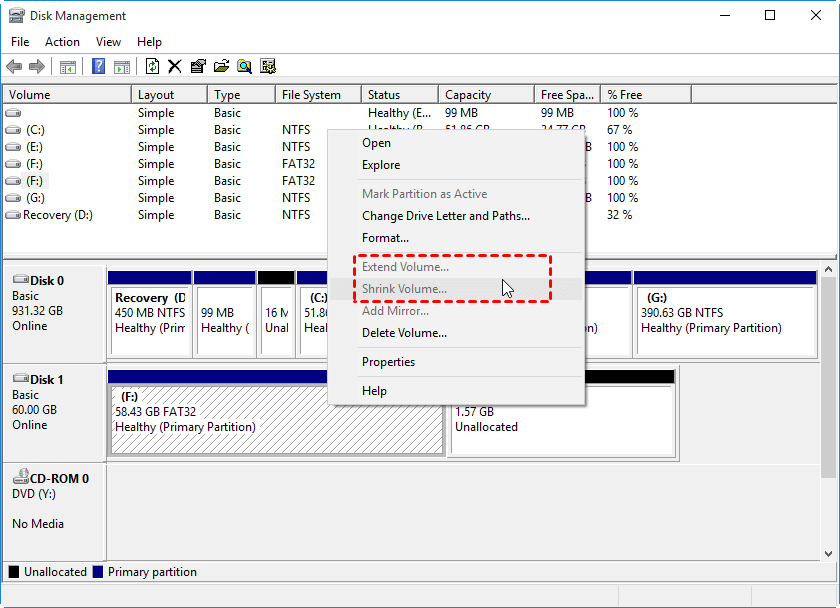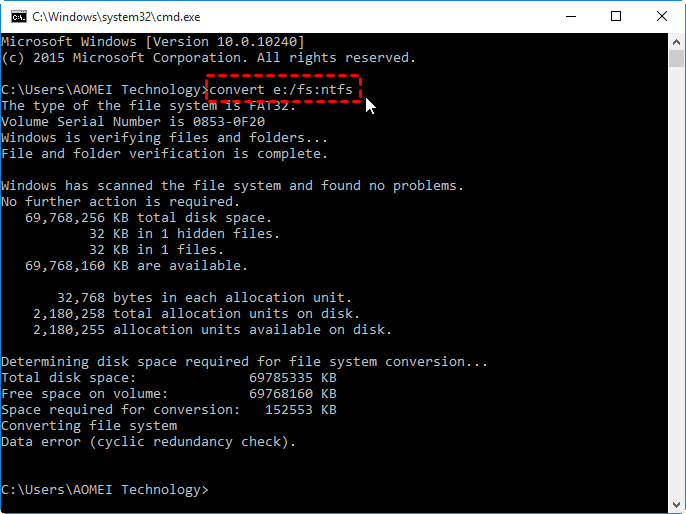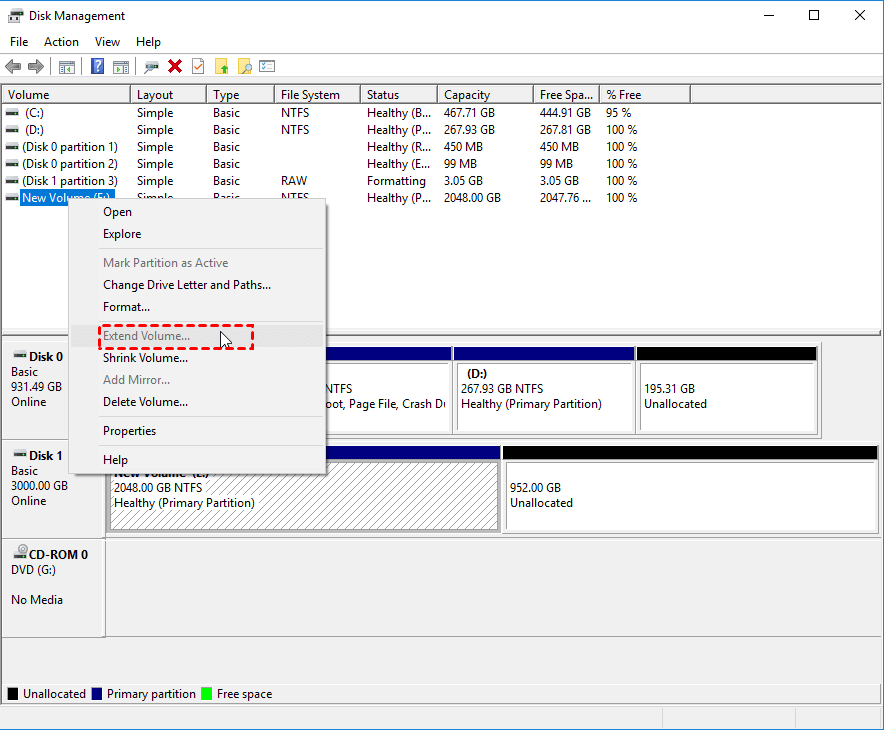Extend Volume Is Greyed Out in Windows 10 – Fix it Effectively
Find out Extend Volume greyed out in Windows 10 Disk Management but don’t know how to fix it? This paper shows quick and easy solutions.
Extend Volume greyed out in Windows 10 Disk management
“My computer is running Windows 10. I try to extend C drive in Disk Management as I find that it is almost full. I shrink D drive and get unallocated space behind D drive. I right-click C drive but only find that Extend Volume option is disabled. Why I can’t extend C drive with unallocated space? Is a way to fix Extend Volume greyed out? Any advice is appreciated!”
Why is “Extend Volume” option greyed out in Windows 10 and how to fix it?
To enable “Extend Volume” function in Windows 10 Disk Management, there should be unallocated space adjacently behind the to-be-extended partition; and the goal partition should be formatted with NTFS. Here list different situations and corresponding solutions of Windows 10 Disk Management “Extend Volume” greyed out.
▶ Case 1. The unallocated space is on the right of the partition that you’ll enlarge, but there is a partition (partitions) between them.
In such a condition, you can delete the partition(s) between the to-be-extended partition and the unallocated space. In Windows 10 Disk Management, right-click the partition that you need to delete and choose “Delete Volume”. Then, right-click the to-be-extended partition and you’ll find “Extend Volume” is enabled. What you should know is that all data on the deleted partition will be lost.
If you don’t want to suffer from data loss, you can use a third-party partition manager- AOMEI Partition Assistant Professional, to move partition and make the unallocated space contiguously behind the to-be-enlarged partition. And this "Resize/Move Partition" function also supports BitLocker partition. Now, see how it works. It's available to download the demo version of AOMEI Partition Professional and have a try!
Step 1. Install and run the tool and all the disks will be listed. Right-click the partition that separates the partition that’s going to be extended and the unallocated space; then choose “Resize/Move Partition”.
Step 2. In the pop-up window, drag the partition to the right side and click “OK”.
Step 3. Click “Apply” and “Proceed” to commit the operation.
Wait for a while and you’ll find that unallocated space has been adjacently behind C drive. And you can use Disk Management to extend it successfully.
Note: AOMEI Partition Assistant Professional is for Windows 11/10/8.1/8/7, XP, and Vista. To move partition in Window Server 2019, 2016, 2012 (R2), 2008 (R2), you can try AOMEI Partition Assistant Server.
▶ Case 2. Then unallocated space is on the left of the to-be-extended partition.
When unallocated space before the partition you need to extend (like the screenshot shows), you can’t make it contiguously behind the partition in Disk Management and then extend partition. At this time, you can merge the unallocated space into the partition via the great partition manager, AOMEI Partition Assistant.
▶ Case 3. There is no unallocated space on the hard drive that contains the to-be-extended partition.
At this time, you can delete the partition adjacently behind the to-be-enlarged partition to get a qualified unallocated space and use Extend Volume function to increase partition capacity. Or you can use AOMEI Partition Assistant Professional to allocate free space from one partition to the partition that you want to extend.
▶ Case 4. The file system of the to-be-enlarged partition isn’t NTFS, but FAT32, exFAT, or RAW.
If the partition is formatted with FAT32, you can convert it to NTFS without losing data using CMD and then extend the partition. Here are detailed steps to convert FAT32 to NTFS:
Step 1. Press Windows + R, input “cmd” and click “OK” to open CMD.
Step 2. In this window, type “convert [drive letter]: fs:ntfs” and hit the “Enter” key.
If the partition is formatted with exFAT or becomes RAW, you need to format it to NTFS, which will cause data loss. Thus, you can back up the partition before formatting.
Further reading about "cannot extend partition" in Windows 11/10/8/7
If the partition style of your hard drive isn’t GPT but MBR, you should consider more conditions.
MBR disk may have primary partitions and logical partitions. The space after deleting the primary partition will be marked as “Unallocated”, and the space after delete the logical partition will be labeled as “Free space”. “Free space” can’t be used to extend primary, unless you convert the basic disk into a dynamic disk. If you don't want to convert your disk to dynamic, you can use AOMEI Partition Assistant to extend the partition. In AOMEI Partition Assistant, Free space and Unallocated shall be marked as the same type – “unallocated”.
MBR supports up to 2TB. For a 3TB or 4TB MBR hard drive, the space beyond 2TB will be unallocated and can’t be used to the existing partition. Thus, you’ll find the Extend Volume greyed out. To solve the problem, you can convert the large disk from MBR into GPT.
